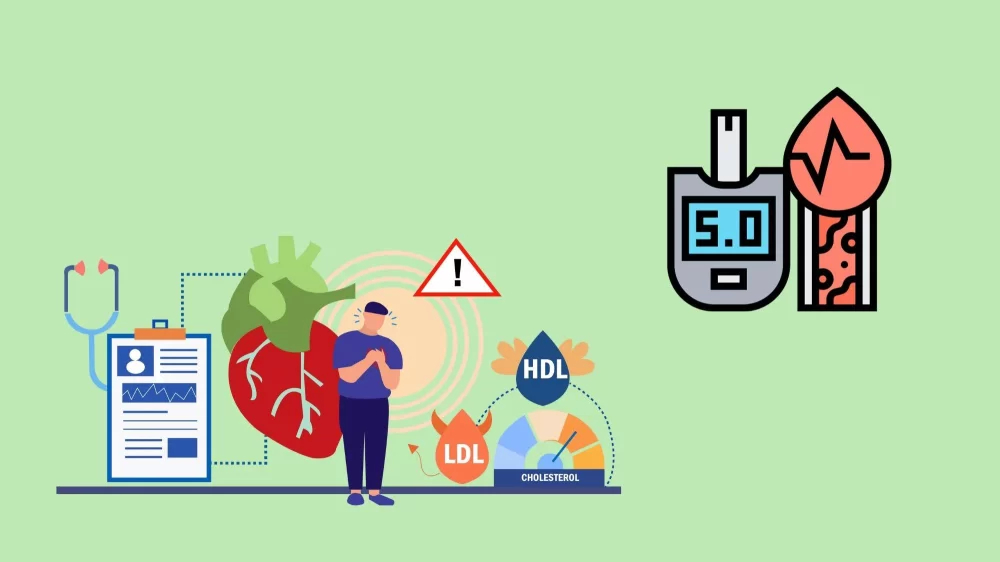- Understanding Cholesterol Levels
- The Importance of Cholesterol Testing
- How to Interpret Your Cholesterol Numbers
- What Does High Cholesterol Mean?
- Maintaining Healthy Cholesterol Levels
Understanding Cholesterol Levels
Cholesterol is a waxy, fat-like substance found in every cell of your body. It plays a vital role in producing hormones, vitamin D, and substances that help digest food. While cholesterol is essential for health, having the right balance is crucial. High or low cholesterol levels can indicate potential heart health risks. Understanding how to interpret your cholesterol test results is key to managing your overall well-being.
The Importance of Cholesterol Testing
Cholesterol testing is a simple but vital procedure that can reveal valuable information about your heart health. Doctors recommend that adults have their cholesterol checked regularly, especially those with risk factors for heart disease, such as high blood pressure, diabetes, or a family history of heart problems. The results from a cholesterol test can provide insight into your risk of developing heart disease or other cardiovascular issues, allowing for timely intervention and prevention strategies.
How to Interpret Your Cholesterol Numbers
Interpreting cholesterol levels is not as complicated as it might seem. When you receive your test results, you'll typically see four main components: total cholesterol, low-density lipoprotein (LDL), high-density lipoprotein (HDL), and triglycerides. Understanding what each of these numbers means can help you make informed decisions about your health.
1. Total Cholesterol
Total cholesterol represents the overall amount of cholesterol in your blood, which includes LDL (bad cholesterol), HDL (good cholesterol), and triglycerides. A total cholesterol level under 200 mg/dL is generally considered healthy, while a level between 200 and 239 mg/dL is borderline high. Anything above 240 mg/dL is considered high, which can increase your risk of heart disease.
2. LDL (Low-Density Lipoprotein) Cholesterol
LDL is often referred to as "bad" cholesterol because it can build up in the walls of your arteries, leading to atherosclerosis (narrowing and hardening of the arteries). High levels of LDL cholesterol can significantly increase your risk of heart disease. Ideally, your LDL cholesterol should be less than 100 mg/dL. Levels between 100 and 129 mg/dL are near optimal, while levels of 130 to 159 mg/dL are borderline high. Anything above 160 mg/dL is considered high.
3. HDL (High-Density Lipoprotein) Cholesterol
HDL is known as "good" cholesterol because it helps remove LDL cholesterol from your bloodstream. Higher levels of HDL cholesterol can lower your risk of heart disease. A level of 60 mg/dL or higher is considered protective against heart disease. Levels lower than 40 mg/dL for men and 50 mg/dL for women are considered a risk factor for heart disease.
4. Triglycerides
Triglycerides are another type of fat found in your blood. High triglyceride levels can increase your risk of heart disease, especially when combined with low HDL or high LDL cholesterol levels. A normal triglyceride level is below 150 mg/dL. Levels between 150 and 199 mg/dL are borderline high, while anything above 200 mg/dL is considered high.
What Does High Cholesterol Mean?
When your cholesterol levels are high, it means there is an excess of cholesterol in your blood, which can increase the risk of plaque buildup in your arteries. This can lead to atherosclerosis, a condition where the arteries become clogged and stiff, restricting blood flow. High cholesterol levels are often a result of poor diet, lack of physical activity, smoking, and genetic factors. If left untreated, high cholesterol can contribute to the development of heart disease, stroke, and other serious cardiovascular conditions.
However, high cholesterol doesn’t always cause symptoms. That's why it’s important to have your cholesterol checked regularly, even if you feel fine. Early detection allows for timely interventions to lower your cholesterol and reduce your risk of cardiovascular problems.
Maintaining Healthy Cholesterol Levels
Maintaining healthy cholesterol levels is an ongoing process that involves making lifestyle changes and, in some cases, taking medications. Below are some practical tips to help you manage your cholesterol:
1. Healthy Diet
A heart-healthy diet is rich in fruits, vegetables, whole grains, and healthy fats like those found in olive oil and avocados. Reducing your intake of saturated fats, trans fats, and cholesterol can help keep your LDL levels in check. Foods high in fiber, such as oats and legumes, can also help lower cholesterol.
2. Regular Exercise
Engaging in regular physical activity can help raise your HDL cholesterol while lowering LDL and triglycerides. Aim for at least 30 minutes of moderate exercise most days of the week. Activities like walking, jogging, swimming, and cycling are great for heart health.
3. Weight Management
Maintaining a healthy weight can have a significant impact on your cholesterol levels. Losing even a small amount of weight can help lower LDL cholesterol and triglycerides while boosting HDL cholesterol. If you're overweight, working with a healthcare provider to create a sustainable weight loss plan is a great first step.
4. Medication
For some individuals, lifestyle changes alone may not be enough to lower cholesterol. In such cases, doctors may prescribe medications such as statins or fibrates to help manage cholesterol levels. It's important to take these medications as prescribed and have regular follow-up appointments to monitor their effectiveness.
If you're concerned about your cholesterol levels, or if you're looking for support in maintaining a healthy heart, HeartCare Hub offers a variety of resources, including expert consultations and heart-healthy products. Our goal is to help you achieve and maintain optimal heart health with the right tools and guidance.





















